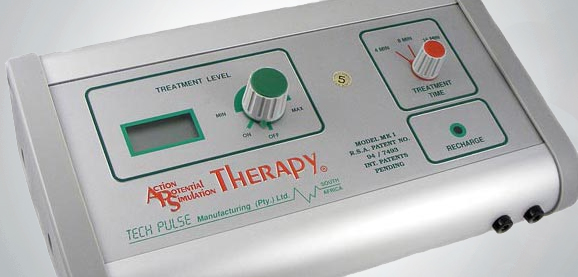classic inventions

APS Therapy
APS Therapy™ was invented in 1991 by Gervan Lubbe. Lubbe read in a medical magazine about the use and the importance of the body's own action potential. This electrical signal exists in everybody and controls many body processes like the production of the body's own painkillers. Lubbe, who was an electro-technician at the time, designed a device that simulated this action potential. The device—named the APS (Action Potential Stimulation)—was going to change the world of pain therapy.
APS Therapy uses electrodes to transfer the signal to the body. Mostly adhesive electrodes are used, which can be re-used easily. APS Therapy recommends the PALS electrodes from Axelgaard, which are tested for biocompatibility with APS Therapy. The electrodes are applied to the body in such way that the affected area is captured between the black and red electrodes. A micro-current signal similar to the action potential goes from one pair of electrodes to the other. This current has to go through the body to be effective.
Within a few years, the APS device gained worldwide fame. Prof. Chris Barnard, who successfully completed the first successful heart transplant in the world in the 1960s, was very enthusiastic about the APS device and became a personal friend of Lubbe. Barnard treated himself for the symptoms of arthritis and was amazed by the success of the treatment, expressing his surprise that the pain stayed away without returning, like other therapies. Results like these made it possible that in 1998 in Geneva, APS Therapy received the gold medal for the best medical invention of that year. Currently, millions of people all over the world work with APS devices to treat sports injuries and relief from chronic pain conditions.

